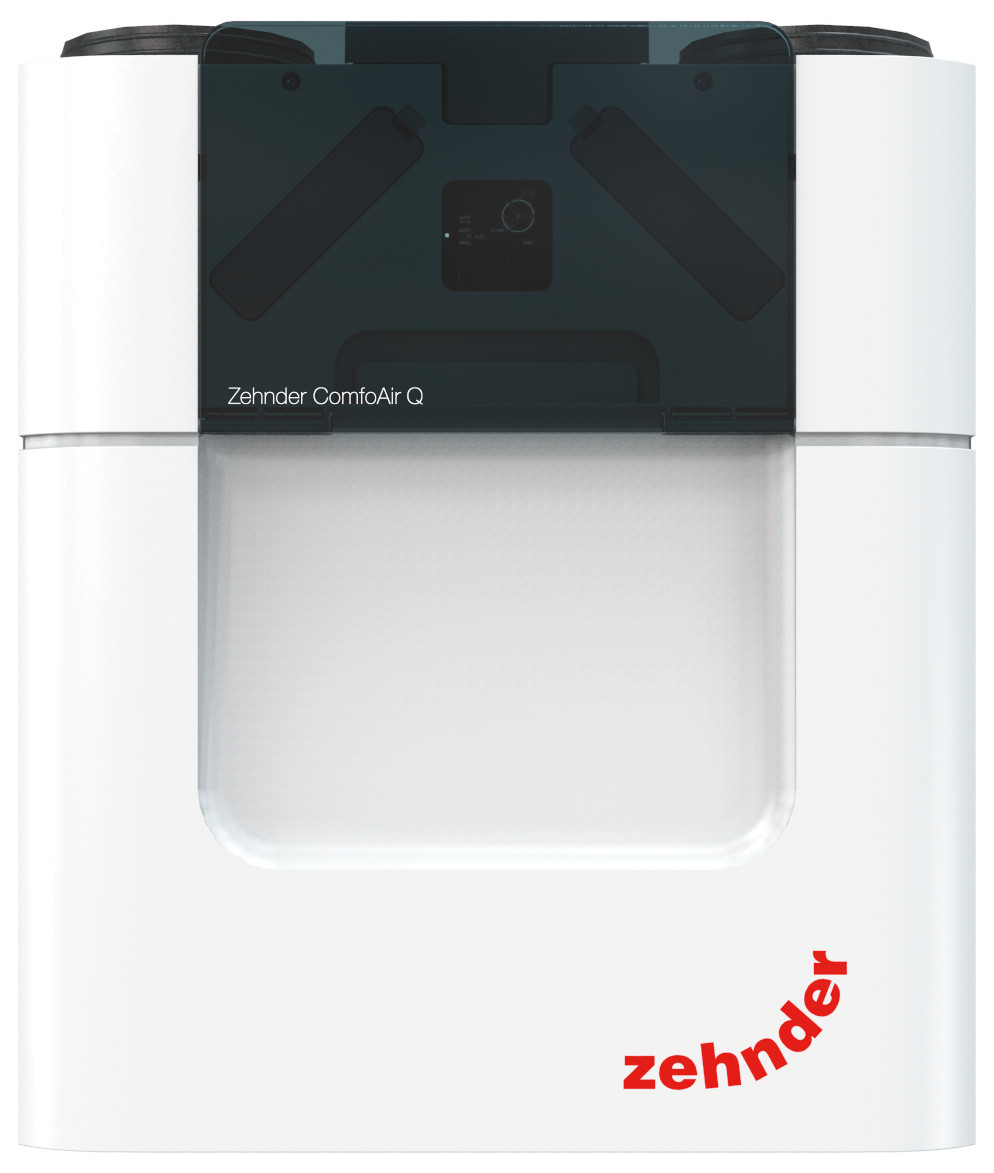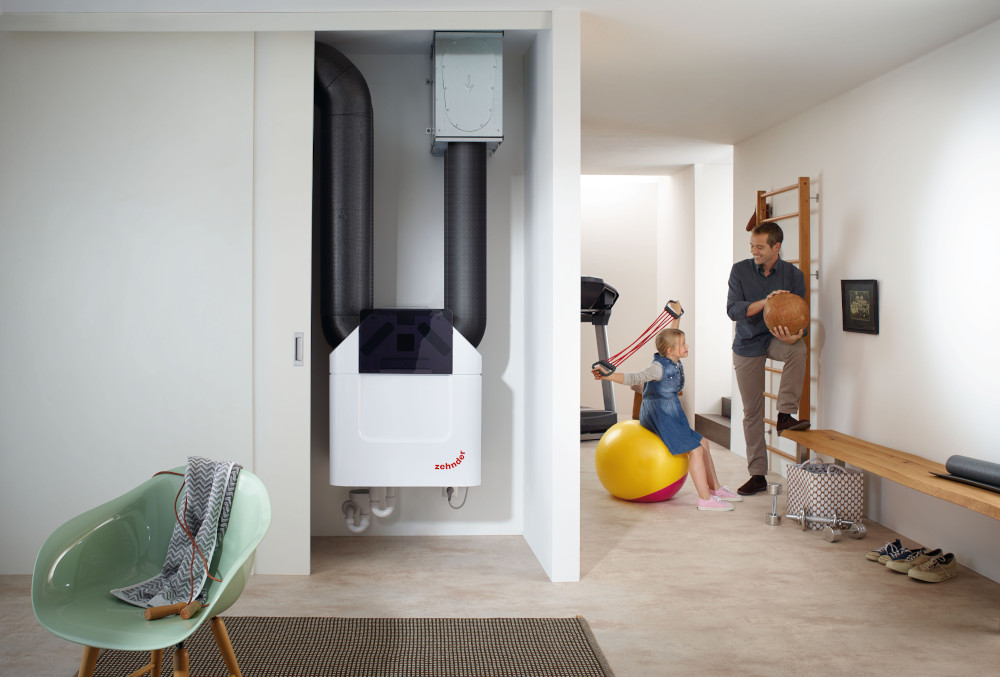Heating and ventilation specialist Zehnder brings you its take on how to ensure your Self-Build project is sustainable, ensuring it provides the optimum comfortable climate for you.
Self-Building your own home offers you the opportunity to factor in a range of measures that you wouldn’t find in a typical open market home. Top of the bill for many Self-Builders is the ability to spec elements that make your home more sustainable, making it greener, more comfortable and cheaper to run.
There’s a trade-off here between cost and outcome, but Self-Builders tend to stay in their homes longer than most, and also invest more in them. What’s more, Self-Builders, as NaCSBA acknowledges, are innovators in greener building, championing new materials and micro-renewables to ensure they get the home they want. As such, they are the green heroes of UK housing.
Self-Building requires careful budgeting, but money spent on sustainability is typically money well spent. The Passivhaus Trust states that Passive /house builds can be achieved on a range of budgets that can bring a 90% reduction in the energy needed for heating requirements, which means savings from year one.
So if you want a greener home where to you get started?
Zehnder specialises in heating and ventilation solutions that can help you achieve your goal. Jason Bennett, National Business Development Manager for Self-Build at Zehnder explains a bit more: “Building regulations and legislation set out sustainability standards that must be met, but these are minimum standards that many self-builders use as a starting point.
“Passive House advocates would argue that energy usage is as equally important as the focus on carbon emissions, giving a more rounded approach, that’s a helpful way to look at the bigger picture.”
Zehnder has put together fives steps for Self-Builders to consider when planning to build greener.
1. Fabric-first
Think about what you will use to build your home. Timber remains an extremely environmentally friendly building material, as long as it is sustainably sourced. In contrast, the production process for cement is extremely carbon intensive, which should be weighed up in terms of sustainability.
Even when used as a form of biomass, timber should result in very little net carbon emissions as long as replanting replaces lost trees.
2. Heat Recovery
The Renewable Energy Hub states that a mechanical ventilation and heat recovery system (MVHR) can save up to a whopping 50% on energy bills in a home. This will vary significantly depending on the building itself, meaning that time spent at planning a whole house approach is always time well spent.
For optimum results, MVHR is best suited to an airtight and highly-insulated building, designed from the outset to utilise an MVHR system.

These work by removing stale air from the house, which is replaced with filtered fresh air. But the clever bit is that the heat is extracted from the stale air, and retained to warm the incoming air to minimise heat loss. This ensures a constant supply of warmed fresh air, with the internal temperature remaining comfortable and stable. Although you can open windows and doors in such homes, the system is designed to be used within the house as a sealed unit with the MVHR doing the hard work, while opening doors and windows less frequently can help minimise noise and air pollution too.
Highly efficient MVHR units, such as Zehnder’s ComfoAir Q range, can recover up to 96% of the heat from extracted air that would have otherwise been exhausted outside. This reduces heating bills, which keeps costs down for the homeowner.
What’s more, MVHR systems are great for keeping allergies at bay, as they extract excess moisture, pollutants and pollen from the air.
3. Insulation
Passive House builds are based on the principle that insulation is vital for a building’s performance, keeping heating requirements to a minimum.
Insulation comes in a range of materials, including environmentally responsible products, such as sheep wool. The U-values wool can achieve compare favourably to those of rigid board insulation or fibreglass, which have a far more carbon-intensive production process.
4. Heating
Designing your home from scratch means you can make the most solar capacity. And when combined with air-tight, insulated construction, solar energy can be used to run an efficient electric heating system, such as an air or heat pump.
Heat pumps can also run on electricity generated from solar power, making them 100% renewable.
While more space intensive, ground source heat pumps use the stable ground temperature as their heat source, making them even more efficient than air-based pumps. These need careful planning from the start of a project, and installation costs are higher, so it’s a decision each Self-Builder must make as part of the wider picture.
In rural areas where space is less of an issue – and especially if you’re off-grid, biomass can also be a good eco-source of heat. Systems can be expensive to install, so check with manufacturers the time period by which the installation costs will start to be paid back by savings.
Finally, for hot water, solar thermal remains a highly sustainable way to heat your hot water.
5. Rainwater harvesting
Water is a relatively cheap utility in the UK, especially in comparison to heating, but the costs to the environment remain high due to the carbon emissions and energy used to produce and supply it.
A rainwater harvesting system is simple to plan into a self-build early on, ensuring you capture free water that can be used for a range of uses, such as flushing toilets, watering the garden and cleaning the car.
Again, it needs to factored in early as the containers are large, and will need major plant to install, which you will inevitably have on site at some point.




